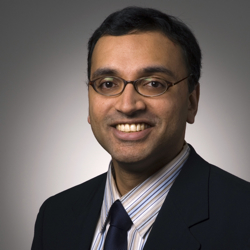 Sunil Iyengar directs the Office of Research & Analysis at the National Endowment for the Arts. Since his arrival at the NEA in June 2006, the office has produced over 20 research publications and revised the major federal survey about arts participation. What does this mean for administrators, audiences, and musicians? Hard data on some of the thorny issues we think about everyday.
Sunil Iyengar directs the Office of Research & Analysis at the National Endowment for the Arts. Since his arrival at the NEA in June 2006, the office has produced over 20 research publications and revised the major federal survey about arts participation. What does this mean for administrators, audiences, and musicians? Hard data on some of the thorny issues we think about everyday.
As we gear up for Sunday’s Talking About Audiences event, one recent NEA study certainly helps quantify a trend we’ve been exploring in the last few months—how technology is changing the orchestra’s relationship with its audience. From CDs and DVDs to music downloads and live streaming, audiences have more options than ever for how and when they choose to listen to music.
A recent study from the NEA entitled “Audience 2.0—How Technology Influences Arts Participation” found that people are embracing these technologies faster than you might think. Over half of US adults participate in the arts through electronic or digital media.
But, as Sunil Iyengar writes, what might be not as obvious is that:
The two distinct forms of arts engagement are statistically correlated… According to our analysis, people who view or listen to arts via electronic media are 2 to 3 times as likely as non-media arts participants to attend live performances, exhibits, and to create or perform their own art. They attend twice as many arts performances per year than non-media users, and they attend a greater diversity of events. Importantly, this pattern holds even after we control for people’s education level and other characteristics. Read the full blog post.
So rather than replacing the live concert experience, it seems that digital media enhances and encourages it? That’s good news.
Sunil Iyengar joins us on Sunday for our free “Talking About Audiences” event in San Francisco—register today. Not in San Francisco? Watch the webcast live at sfcv.org/amorchforum.



Back in January I was attending the workshop performance of the Glass/Wilson “opera” Einstein on the Beach as part of U-Michigan’s Renegade Series. (This fabulous event set culminated in the SFSO’s visit to Ann Arbor to present its Mavericks concerts in March.) I taught both a university and free public library course to help listeners connect with these shows and got interviewed by our campus NPR affiliate about the series. During the interview I was asked if I “tweeted” and I said that indeed I did as http://twitter.com/usmusicscholar. A few days when the radio spot aired it concluded “and for live updates during the opera follow usmusicscholar on Twitter.” Now, of course, I made no such offer, but now I was stuck. The NPR audience had just been told to follow me and indeed I saw new names linked to my account as “followers.” What to do? I had never tweeted DURING a performance…
As an insider to the concert, I figured I’d give it a try and kept my smart phone buried deep in my coat with the screen brightness turned down. I posted every 20 mins or so during the 4.5 hour opera — from my seat, from the lobby, etc. It was actually pretty cool. I got responses from others in the audience and that evening after the show from some of the performers. For weeks afterwards, friends and new acquaintances thanked me for the updates and some attended the show as a result. This, of course, is just one anecdote and I have not made a habit of such Tweeting since, but it suggests to me that there’s potential here for enriching the concert experience for those who live in the parallel social media universe. Certainly I enjoy checking into a concert hall on Foursquare before a show to discover which of my social media obsessed friends are in attendance. It’s time, I think, for our cultural institutions to make friends with social media and SFSO is a leaders here (hence this blog). That social media types are twice as likely to attend concerts seems like a good reason to do so sooner than later…